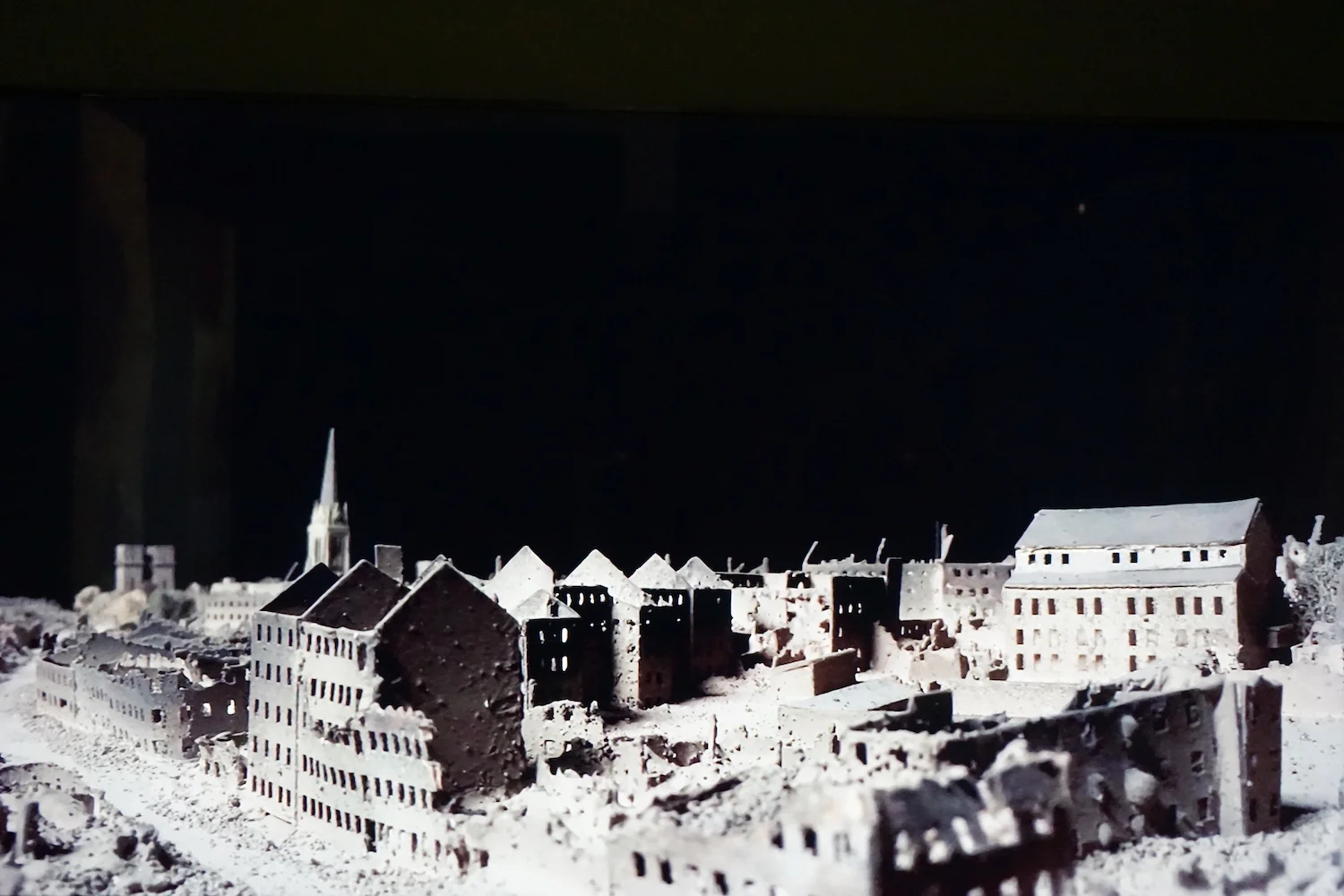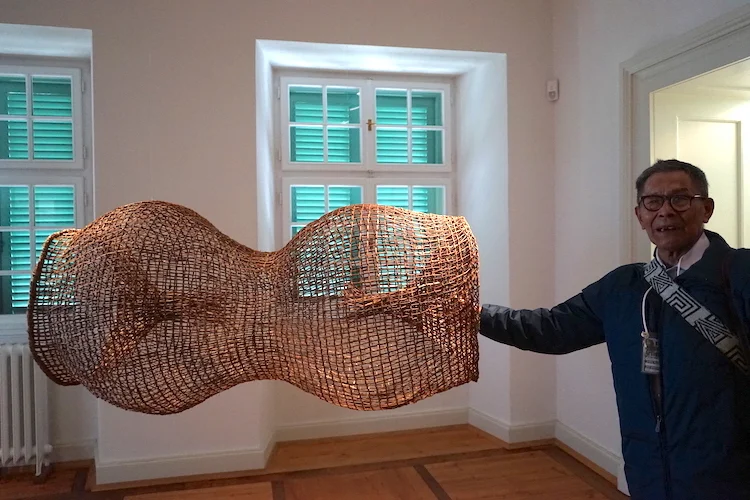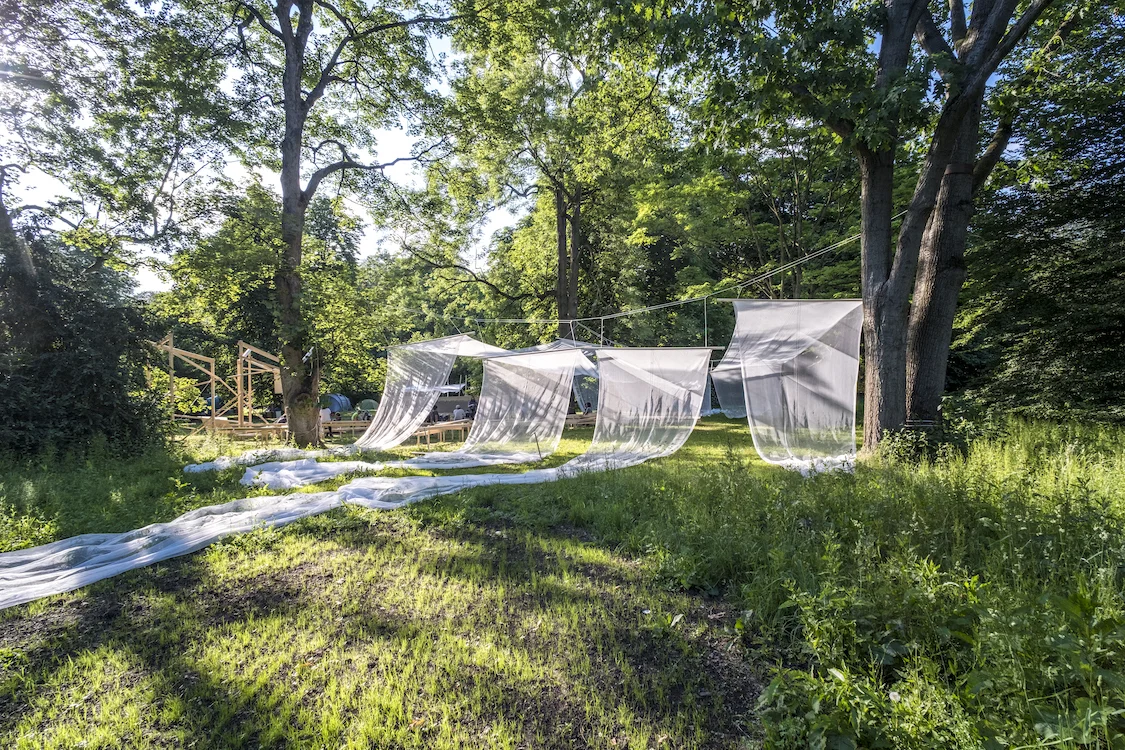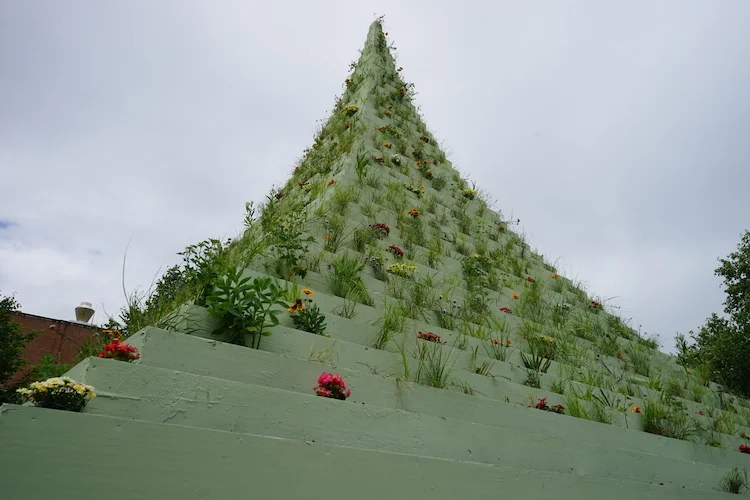Documenta 14: Kassel
Cover image work by Hiwa K. Photo: Sabina Enéa Téari
Work by Marta Minujin. Photo: Egor Sviridenko
Work by Agnes Denes. Photo: a stranger
Work by Hiwa K. Photo: Sabina Enéa Téari
Work by Aboubakar Fofana. Photo: Sabina Enéa Téari
Work by Banu Cennetoglu. Photo: Egor Sviridenko
Work by Pélagie Gbaguidi. Photo: Sabina Enéa Téari
Works by Cecilia Vicuña in the foreground, and by Britta Marakatt-Labba in the background. Photo: Sabina Enéa Téari
Work by Vlassis Caniaris. Photo: Sabina Enéa Téari
Work by Abel Rodríguez. Photo: Sabina Enéa Téari
Work by Ciudad Abierta. Photo: Mathias Voelzke
Works by Yervant Gianikian and Angela Ricci Lucchi. Photo: Sabina Enéa Téari
Work by Agnes Denes. Photo: Sabina Enéa Téari
For 100 summer days the city of Kassel becomes connected through the presence of art everywhere. It even turns into an artwork itself, renewing its habitual appearances, changing its routines. The artworks engaging different senses offer themselves to your imagination: see them, smell them, feel them, feel them move, hear them whisper, hear them play music. They ask you for your time. They demand from you to slow down and pay attention. All senses in play, it becomes more difficult to just run through the exhibition checking and ticking “seen-it” lists.
Some works get out of museums and closed spaces, come out to the streets to meet the locals, to whisper something to them through a loudspeaker, to change the cityscape by adding new pieces of architecture, to surprise public spaces with their raiments and symbols. If you walk around the Nordstadtpark you are sure to come across the Living Pyramid by Agnes Denes, dressed in stacked wooden terraces filled with soil with a variety of living plants. In fact it is a work in progress — you too are invited to contribute to this allegorical structure by planting flowers and grass yourself. Strolling around the shopping area on Königsplatz you stumble upon a monumental grey obelisk — a work by Olu Oguibe — Monument for strangers and refugees, wearing words from the New Testament “I was a stranger and you took me in” in Arabic, English, German and Turkish. From there, making your way to Friedrichsplatz, you will see a form of an ancient greek Acropolis looking at you from afar — the Parthenon of banned books by Marta Minujín, in a vesture of 100,000 books in response to many historical occasions of censorship of ideas. Another favourite of mine from the creation of spaces through forms and interactions is Hiwa K’s "When we were exhaling" — ceramic tube homes dressed with cosiness from inside, and guarded online and offline by the students from Kunsthochschule Kassel, who took part in decorating the tubes, and who now guard them from visitors’ wishes to engage with the artwork by climbing into it. The artist himself however originally wanted to use these ceramic pipes as an Airbnb space for Documenta 14 visitors. A nice idea to invite people to experience directly in their own bodies what displacement, though redesigned and redecorated, feels like.
The artworks come from all over the world. North. South. East. West. Known and unknown. Each sharing pieces of the worlds they notice, where they stand and what they experience. Beside much commentary on the state of the world out there (much of which is far from being life-celebrating, but rather is a reflection of violence and aggression of political powers in different parts of the world), they are also mirrors into the state of the world in here. The state of the inner world, where among other wonders, our own individual little dictators reside, from time to time getting to rule our consciousness like an annoying déjà-vu. It is often from that place that we “know” about things and people. It is from that place that we run into danger of stopping to learn. Inside and outside mirror and reflect one another.
This year Documenta is “Learning From Athens”. The twofold structure for the 14th exhibition allowed for doubling of perspectives, shared by the two venues, Athens and Kassel, hosting the event and learning from each other. Artistic Director of Documenta 14, Adam Szymczyk, asserted that unlearning and not knowing are at the centre of this exhibition. The times of fixated knowing and prescriptive ways of being are ending. People who think they know the Truth, place their flag there and defend it from all who think differently, feel that this stable ground is slowly turning to water and they start to float. Some see it as a threat, some see it as an invitation to be human. To learn. Continuously. Life-long. And through that move back from competition to collaboration. To co-living. We don’t know the others we only know ourselves. We don’t know ourselves we only know the others.
Learner’s mind is a beginner’s mind, it requires from us to deliberately and gently explore the unknown. However there is something about tolerating ambiguity that we cannot stand. Often we rather choose to use other people’s beliefs, to assign the rigid “this is right” and “this is wrong” standards instead. So we can feel safe. Categorising feels safe. Fixated knowing feels safe. For some people, though, the opposite feels safe — an absence of categories, total weightlessness, an apparent freedom to choose whatever they want any moment, with no clear demarkation whatsoever. Safely protected from anything that requires commitment. Being safe has many disguises. “BEINGSAFEISSCARY” (Banu Cennetoğlu).
The scariness of being safe is to be safely wrapped in repeating situations, feelings, thoughts, and circumstances. Which in turn can feel like a calming lullaby, or like that annoying déjà-vu of inner queens and kings turning into dictators and torturing the entire population with repeating impoverishing conditions. How to come to a place of openness where we really begin to unlearn going in the same circles we already know, individually and collectively?
Repetition and control go together. Change and spaciousness of continuously unfolding experiences, are on the other side of this coin. The balance between feeling the weight and feeling the empowerment to be free at the same time is tricky. That is real learning to me, one that involves crossing personal borders of individualised and established worldview, not committing to just one safe way of thinking. It involves taking risks, and being ready to challenge one’s convictions. It involves doing the work. Like for Aristotle, being human means being at work. Energeia. Work and play are two sides of the same thing unwilling to exist without one another. Most authentic play is built on work, on something real and committed. Deepest work is built on play, on something light and fluid.
Real work and real play begin at an encounter. The encounter with the other is an act of courage. When we dive into meeting each other for real it can be an investigation of our ability to listen, to express, to learn, to be changed by each other. To open to an encounter is a choice, just as it is to assess the other by how they look and how smart or how loud they sound. To engage in conversations that involve our inner discernment beyond identities we have constructed for ourselves through our upbringing in this or that country, education in this or that school, professional training in this or that skill, is not easy but it is a choice. It's asking for an engagement from a place of sincerity, which grows beyond and before we became Greek, or Chinese, or lawyers, or socialists. Before we took sides. Before we distributed labels and categories. Nothing wrong with categories as long as they are not establishing dogmas, which prevent us from learning with and from each other in a continuous flow. Everyone is a teacher. Everyone is a student. A new space of imagination, thinking, and action can open from here. We might not know what’s going to happen but we can be open to learn. Art becomes then a compass of imagination, an indication towards what was, is, and what can be possible. A guide through actuality and potentiality.
Our interview with a Cuban-born artist María Magdalena Campos Pons during the opening of Documenta 14 at her and Neil Leonard's installation, performance and meeting space Bar Matanzas.





